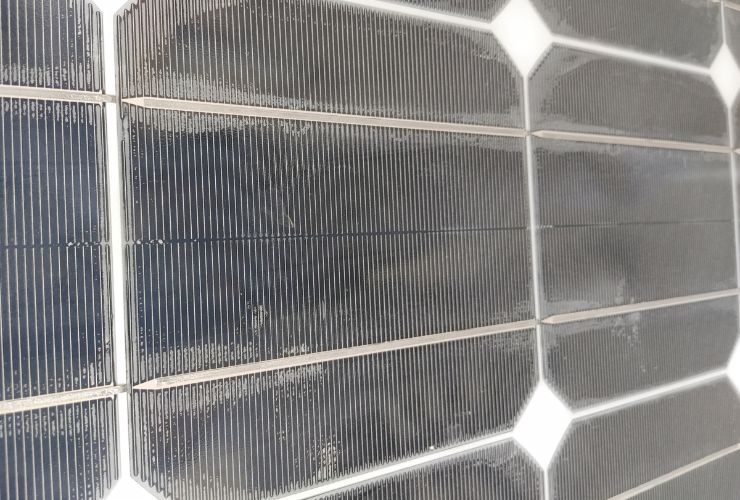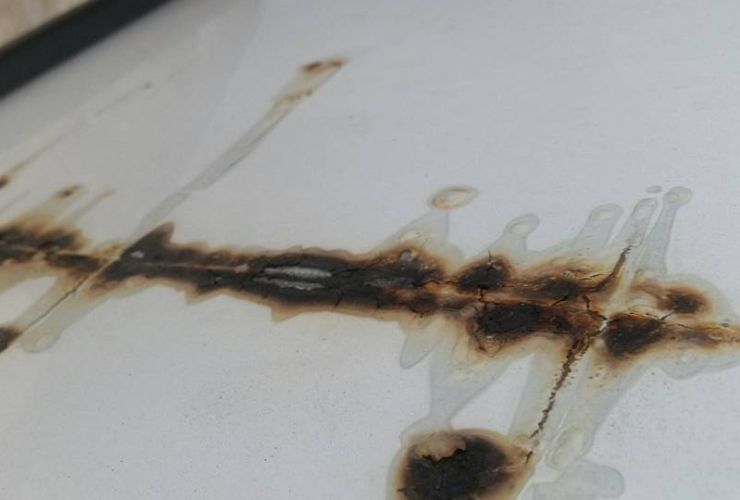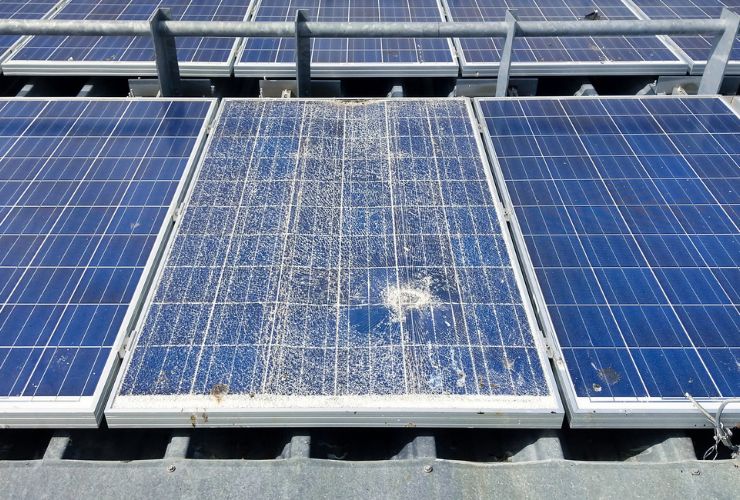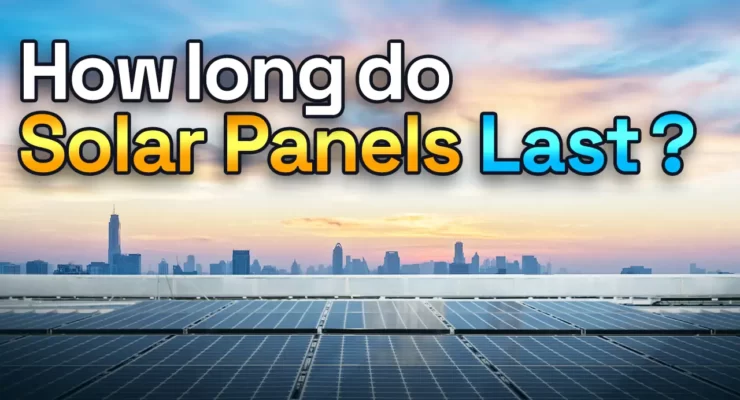Fast read
Solar panels from reputable manufacturers typically have a lifespan of 25 - 30 years, backed by performance and product warranties.
In places like Australia, with our harsh sun, humidity and salty air close to the coast, low-quality panels can face issues in just 2-5 years. Problems with cheap solar panel failures can be plentiful including delamination, which allows water to corrode the cells, and PID, affecting the panel's efficiency.
Additionally, microcracks can lead to hotspots, decreasing solar panel efficiency and possibly cracking the panel. Other issues encompass snail trails, junction box problems, and faulty fake plugs. Investing in good quality panels from trusted brands is crucial for longevity.
How long do solar panels last in Australia and why could they fail?
When making an investment like purchasing a solar PV system, you want a beneficial return. We should all know by now what solar panels do and the benefits they offer, but how long do they last in Australia? If you have to replace them every couple of years, you would not actually be making money.
Warranties
Many solar panel manufacturers claim that their panels will last 15 to 25 years in Australia. This is subsequently supported by the performance and product warranty of 25 years that many of these solar panel brands put on their panels.
The performance warranty covers the power output of the solar modules, while the product warranty covers the physical item and any damage that may occur to it. Specifically, the product warranty has crept up from 10 years to 12, then 15, and now 25 in recent years. In fact, there is one manufacturer that offers a 40-year product warranty! However, while a 40-year warranty sounds great at first, will panels with today’s technology still be relevant in 40 years?
How long should solar panels last in Australia?
As a customer today, you should expect a quality solar panel from a good manufacturer to last 25 years. Cheap panels have been known to suffer from a range of issues and can go to the tip or recycling for as little as 3 to 5 years. Unfortunately, even if they have long product warranties, this is no help to the consumer, because inevitably such manufacturers disappear and close their Australian operations.
The key here is to get panels from an established and GOOD panel manufacturer. One of the problems in Australia today is the amount of cheap and therefore low-quality solar panels used. These cheap solar panels can last only a few years in Australia and the issues they fail are explained below.
1. Delamination
Delamination is the process where the two plastic sheets on the front and back of the panel peel apart. This is a more prevalent issue in Australia than in other places as the hot and humid climate here makes this failure more likely. Cheap solar panels save electricity in manufacturing and the lamination process time is reduced, leading to issues years down the track.

2. Discoloured backing sheet
Usually, the backing sheet of a solar panel is completely white. However, in some cheap low-quality solar panel batches it is possible to see discoloured backing sheets turning yellow and brown. Over time such sheets not only make the panels look ugly, but further cracking can occur. So what causes the discolouration?
Whether or not the backing sheet will become discoloured begins with the quality of the backing sheet material initially used. If the manufacturer uses high-quality material, with UV stabilisation the likelihood of discolouration is minimal. However, if the manufacturer is to use low-quality material, which will look the same initially, the Australian Sun is likely to punish the panel with discolouration of the backing sheet.
3. Hotspots
Hotspots are a lot more likely to occur with low-quality solar panels as these can commonly come riddled with microcracks.
Microcracks are when cells in the panels have small unnoticeable cracks in them, causing resistance to the electron flows. When this first occurs, there will be a localised area of the panel that has a severe decrease in efficiency, ultimately limiting the output of the entire solar panel. This resistance will further develop and then become a hotspot. If this hotspot gets hot enough, the backing sheet

4. Water ingress
As the name suggests, water ingress is when water penetrates the solar panel, usually because of compromised seals or gaps in the panel’s casing, or delamination. The presence of water can damage the internal components, leading to reduced efficiency and inevitably a complete failure.
5. Burn marks
Solar panels in Australia may develop burn marks if there’s a failure in the junction box such as a bypass diode failure or failure at the soldering points of the panel. These burn marks are often a result of hot spots that have gone unnoticed and can render the panel ineffective.
6. Broken glass
Any cracks or broken glass covering a solar panel isn’t just an aesthetic problem. It will always lead to solar panel failure because dirt and moisture can now easily penetrate, attach the lamination and then enter the panel and cause corrosion and degrade the cells.

7. Bypass diode failure
A bypass diode is designed to protect the solar cells from overheating when they’re shaded. If this diode fails, sometimes via too much strong shade for prolonged periods, the shaded cells won’t get protected, leading to overheating and hot spot damage.
8. Snail trails
They are a sign of a chemical reaction between the encapsulant and the silver in the solar cells. While these trails don’t immediately reduce the solar panel’s performance, they may lead to more severe issues, as they can be a sign of microcracks and lead to other issues over time.
9. Potential Induced Degradation (PID)
PID occurs because of stray currents that can degrade the solar panel’s performance. It’s primarily caused by voltage, heat, and humidity, which lead to performance degradation over time. While this was a significant problem a decade ago, modern-quality solar panels do not display this issue frequently.
10. Microcracks
Microcracks can form during the solar panel’s manufacturing, transportation, or installation. These tiny cracks might not immediately affect performance but can grow over time and reduce the solar panel’s efficiency, causing resistance to electron flow, which over time can then develop into hot spots and cracked panel glass. For this reason, even a quality solar panel can be stuffed up by a rough install crew.
11. Corrosion
Corrosion is common in areas with high humidity or salt-rich air environments, near the coast in Australia. The aluminium parts of the solar panel or the racking frame and clamps (especially if cheap un-anodised racking was used) can corrode, leading to reduced structural integrity and potential performance issues with the solar panel.
12. Poor quality materials or manufacturing methods
Poor quality materials or substandard manufacturing processes can significantly reduce how long solar panels last in Australia.
13. Physical damage
Panels can be damaged via physical impact. This can be hail, falling objects, or other external impacts, which can compromise the integrity of the solar panel. Such damage not only affects the current performance but may also introduce vulnerabilities and cracks that reduce the panel’s overall lifespan.
14. Poor solar installation
Even the best solar equipment can suffer if installed by unqualified staff. Poor installation practice can lead to numerous issues, from microcracks caused during installation to inadequate angling that reduces exposure to sunlight or increases shadowing on the panels. You need qualified electricians to perform this task, not overseas students after a quick buck.
Other issues that affect how long solar panels last in Australia
While the previously mentioned issues are the most common, there are some other issues that can occur with low-quality solar panels in Australia. These include fake MC4 plugs burning out under load or flimsy solar panel frames and racking failing in heavy winds.
A last thought about how long solar panels last in Australia
Quality solar panels are built to last a long time in Australia. On average, a solar panel’s lifespan is about 25 years. However, this doesn’t mean they stop producing electricity after this period. Instead, their efficiency gradually decreases.



